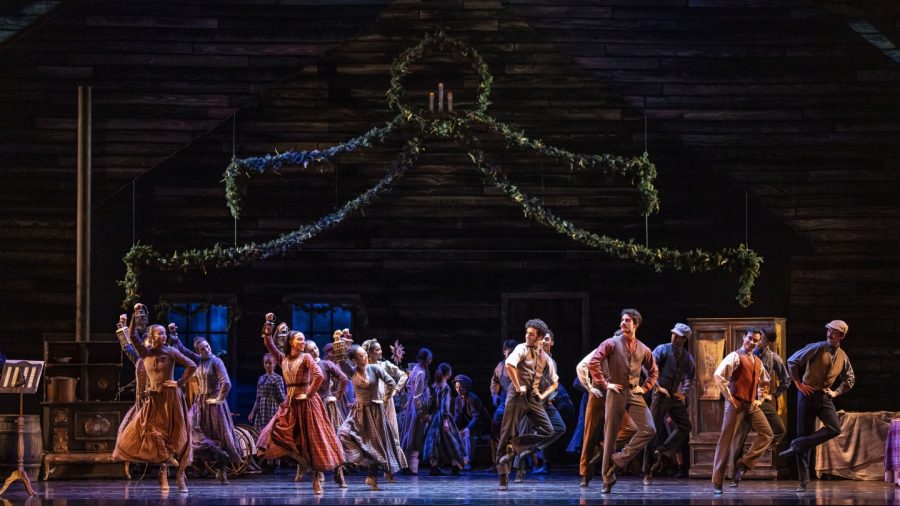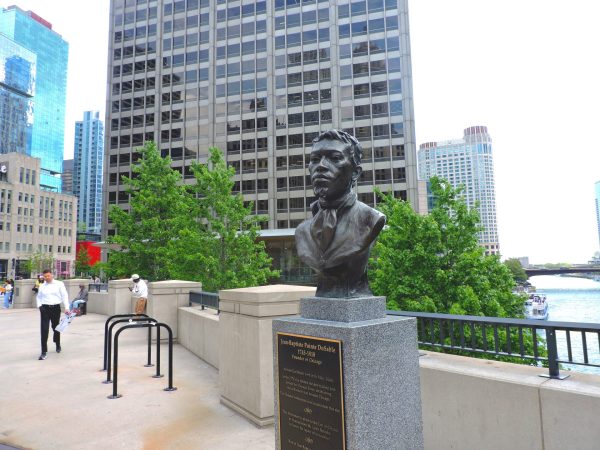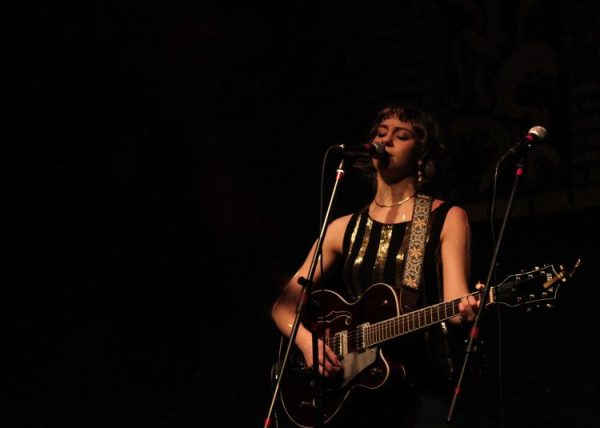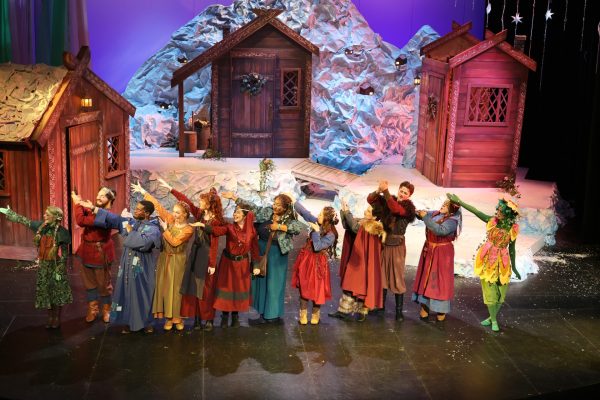Joffrey Ballet’s reimagined Nutcracker brings new dimension to a Holiday Classic
Credit: Todd Rosenberg
The Joffery ballet, one of the largest dance companies in Chicago, celebrates the holidays with their yearly production of “The Nutcracker.”
Up there with figure skating and decorating gingerbread houses, an annual outing to catch a performance of “The Nutcracker” during the holiday season is a precious tradition among many American families.
For Chicagoans, that means a trip to the Lyric Opera House to attend the Joffrey Ballet’s “The Nutcracker,” which has been running in its current form since 2016. Though the capability of the dancers is never in question, the Joffrey’s reimagining of “The Nutcracker” remains a puzzling combination of act-one creative ambition and act-two reluctance to veer away from tradition.
Choreographed by Christopher Wheeldon with story by Brian Selznick and Staging by Nicolas Blanc, Adam Blyde and Suzanne Lopez, the Joffrey Ballet’s adaption reimagines the traditional tale of well-off young girl Clara, who is gifted a nutcracker by her eccentric Uncle Drosselmeyer. Clara falls asleep and dreams of an epic battle between the Nutcracker and the Mouse King, and is then treated to a display of candy-themed dances from across various fantastical realms.
In the Joffrey’s version, Clara is now named Marie (danced by Valeria Chaykina) and is the daughter of an immigrant worker helping build the 1892 World’s Columbian Exhibition — a real-life Chicago fair which serves as act two’s backdrop. The re-examination of Clara/Marie’s wealth and social status certainly makes act one an added layered spectacle, and helps punch up the show’s more pedestrian elements. In this regard, the creative changes go a long way to help act one rival act two in terms of audience engagement.
Of course, without dialogue and without much room to stray from the general confines of the story, the changes to reflect a more diverse background and socioeconomic class for Marie and her family do remain relatively cosmetic in the grand scheme of things. But the effort to create an original story — and thus new costuming, set design, and staging efforts, is commendable.
The show’s updated story also help reflects the diversity of the Joffrey Ballet Company’s dancers — at the performance I attended, a number of the lead dancers were performers of color.This includes the reimagined Drosselmeyer (renamed here ‘The Impresario of the Fair’), danced by Yoshihisa Arai, and the Sugar-Plum stand-in, The Queen of the Fair, danced by Amanda Assucena.
As for the performers themselves, act-one doesn’t have many opportunities to showcase dancing en-pointe, thanks in large part to the folksy reimagining of the party scene, which featured an onstage three-piece orchestra. But once the current rises on act two, the ballet truly shifts into high gear, and though it certainly doesn’t have as many story/aesthetic changes as act one, there are still a few surprises worth noting, and the individual dances are as mesmerizing as ever.
The most drastic of the act-two changes is undoubtedly the aforementioned gilded Queen of the Fair, serving as the replacement for the Sugar Plum fairy. Though certainly fitting with the World’s Fair theme, the lack of a Sugar Plum Fairy is perhaps the most disappointing, if not for other reasons than the beloved nature of the character and lack of effect the change brings.
On the flipside, the conventional Russian dance has been swapped for an Old West style Texas shoot-em-up show, complete with a lasso-wielding cowboy and a trio of boot-clad Can-Can dancers. Seeing such a gaudy display of Americana certainly drew laughs from the audience, but the tongue-in-cheek Cowboy (Edson Barbosa)’s antics and the colorful moulin-rouge inspired costumes make the change a welcome one.
Other standouts of the world’s fair pavilions include the playful Mother Nutcracker and children routine, which features (in keeping with convention) a gaggle of child performers dressed as Walnuts, complete with costumes that “crack” open, courtesy of designer Julian Crouch. Like the Buffalo Bill’s Wild West Show dance, the Mother Nutcracker number also drew laughs from the audience – though the inclusion of children in any Nutcracker production is always a crowd favorite.
In terms of technical and dramatic aptitude, it was the sensual Arabian duet (Jeraldine Mendoza and Dylan Gutierrez) that won the night. Moving in hypnotizing synchronicity, the intertwining choreography and gauzy costumes are the finishing touches on a stunning rendition of a classic number. The trio of venetian masked dancers (Anais Bueno, Anabella de la Nuez, and Natali Taht) with their staggered, lively choreography was another standout.
Though families simply expecting your standard out-of-the-box local nutcracker production will likely have much confusion to discuss during intermission, those on the hunt for an exquisitely danced and ambitiously directed take on a Christmas classic will likely find much to appreciate in the Joffrey Ballet’s The Nutcracker.








Bruce Rehberger / Dec 27, 2022 at 11:12 am
First of all, I wish to compliment Ms. Coates on her expressive and colorful writing. I enjoyed every word.
Second, while I agree with most of the changes to the original Nutcracker story, having a cowboy western theme dance in place of the usual Russina Cossaks is in my mind a huge mistake….and can be accused of being a parody. It is my second favorite number after the Arabina duet. It’s too bad the choreographer could not keep the Russian element in some form. Oh well…..